Neural correlates of the LSD experience revealed by multimodal neuroimaging
- PMID: 27071089
- PMCID: PMC4855588
- DOI: 10.1073/pnas.1518377113
Neural correlates of the LSD experience revealed by multimodal neuroimaging
Abstract
Lysergic acid diethylamide (LSD) is the prototypical psychedelic drug, but its effects on the human brain have never been studied before with modern neuroimaging. Here, three complementary neuroimaging techniques: arterial spin labeling (ASL), blood oxygen level-dependent (BOLD) measures, and magnetoencephalography (MEG), implemented during resting state conditions, revealed marked changes in brain activity after LSD that correlated strongly with its characteristic psychological effects. Increased visual cortex cerebral blood flow (CBF), decreased visual cortex alpha power, and a greatly expanded primary visual cortex (V1) functional connectivity profile correlated strongly with ratings of visual hallucinations, implying that intrinsic brain activity exerts greater influence on visual processing in the psychedelic state, thereby defining its hallucinatory quality. LSD's marked effects on the visual cortex did not significantly correlate with the drug's other characteristic effects on consciousness, however. Rather, decreased connectivity between the parahippocampus and retrosplenial cortex (RSC) correlated strongly with ratings of "ego-dissolution" and "altered meaning," implying the importance of this particular circuit for the maintenance of "self" or "ego" and its processing of "meaning." Strong relationships were also found between the different imaging metrics, enabling firmer inferences to be made about their functional significance. This uniquely comprehensive examination of the LSD state represents an important advance in scientific research with psychedelic drugs at a time of growing interest in their scientific and therapeutic value. The present results contribute important new insights into the characteristic hallucinatory and consciousness-altering properties of psychedelics that inform on how they can model certain pathological states and potentially treat others.
Keywords: LSD; brain; consciousness; psychedelic; serotonin.
Conflict of interest statement
The authors declare no conflict of interest.
Figures
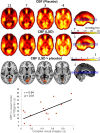
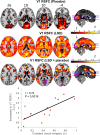
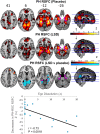
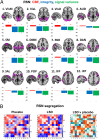
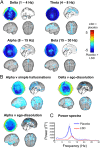
References
-
- Hofmann A. LSD: My Problem Child. McGraw-Hill; New York: 1980.
-
- Carhart-Harris RL, et al. LSD enhances suggestibility in healthy volunteers. Psychopharmacology (Berl) 2015;232(4):785–794. - PubMed
-
- Kaelen M, et al. LSD enhances the emotional response to music. Psychopharmacology (Berl) 2015;232(19):3607–3614. - PubMed
-
- Schmid Y, et al. Acute Effects of Lysergic Acid Diethylamide in Healthy Subjects. Biol Psychiatry. 2015;78(8):544–553. - PubMed

